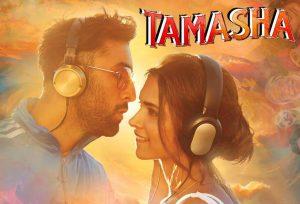India's cultural diversity almost guarantees the fact that there will be more than just one aspect (Bollywood) of Indian cinema. Numerous regional film industries exist to bring that particular region's stories, issues, and talents onto a bigger stage.
Various regional industries have even produced the big Bollywood stars, which have gone on to make a name for themselves in India and abroad. Barring the South India's giants like the Malayalam, Tamil, Kannada or Telugu film industries, and at times the Bengali, Punjabi, and Marathi cinema, the rest of the regional film industries have struggled for a wider reach due to many factors. Considering the range of talent and production capabilities available, the risk of investing into these regional film industries is bound to pay off.
Assamese
Rupkonwar Jyotiprasad Agarwala, a visionary poet and freedom fighter, has to be given due credit in establishing the Assamese film industry. He produced the film 'Joymati' in 1935, under Critakala Movietone. Although the first few films of the industry were completed with a meagre budget of less than 1 lakh rupees and were huge financial failures, the Assamese filmmakers did not let go of their ambition to produce indigenous movies. They lacked technicians, and crew with the various know-hows. However, the industry has grown to produce a few World class cinema. In fact, ' Village Rockstars ', a 2017 drama film had won a National Film Awards for its beautiful portrayal of the coming-of-age genre. Few of the biggest names to come out of the Assamese film industry are Jhanu Barua, Seema Biswas, and Adil Hussain. The industry has also produced musical geniuses such as Bhupen Hazarika and the famous contemporary artist Zubeen Garg.
Bengali
The Bengali film industry is one of the most renowned film industries in the country, apart from Bollywood itself. Back in the 1890s, "bioscopes" were the medium of entertainment which was closest to cinema. Hiralal Sen and D.G. Ganguly toiled in order to put the industry on the map. They had introduced the Royal Bioscope Company and the Indo British Film Co., the latter of which has the distinction of being the first production company to be owned by a Bengali. 'Billwamangal' was released in 1919, and was the first Bengali film ever to be produced. 1931's 'Jamai Shashthi' was the first ever Bengali talkies, produced by Madan Theatres. Their legacy was carried forward by the one and only Satyajit Ray, who has won international fame with his notable work. Prosenjit Chatterjee, Parambhrata Chatterjee, Rituparno Ghosh, Sabyasachi Chakrabarty, and Suchitra Sen are a few stalwarts of Bengali cinema.
Bhojpuri
Bhojpuri film industry's establishment began in the 1960s, as it catered to mostly residents of eastern Uttar Pradesh and western Bihar. As Bhojpuri speakers started to migrate to the metro cities in search of a better lifestyle, such as Delhi and Mumbai, Bhojpuri films' recognition and popularity reached those areas as well. 'Ganga Maiyya Tohe Piyari Chadhaibo', produced in 1962 is the first ever Bhojpuri movie. Bhojpuri movies have even spread as far as West Indies, Oceania, and South America. Ravi Kishan is one of the biggest stars of this industry. His movie 'Saiyyan Hamar' in 2001, revived the entire industry and shot him to fame.
Kannada
The Kannada regional film industry was officially established in and around the 1930s, with Gubbi Veeranna, a director and Padma Shri award winner becoming one of its founding members. The Kannada film industry usually caters to the South Indian audience, more specifically, the audience in Karnataka. Veeranna's Karnatak Gubbi Productions actually produced the first ever Kannada movie called Sadarame, which was released in 1935. Gubbi himself acted the lead in that particular movie. The production house later changed its name to Karnataka Films Ltd. Rajkumar started his career through this production house. He and Girish Karnad are a few eminent personalities from this regional cinema. Kannada film industry is also called Sandalwood or Chandanavana.
Malayalam
The Malayalam film industry is actually the fourth largest film industry in the entirety of India. It is based in the city of Kochi and has been known for portraying social stigmas and issues with great acting performances, all on a rather small budget. Until 1947, it was difficult for Malayalam films to find producers from the same region. Till that period of time, they were produced by Tamil producers. Udaya Studio's establishment in Kerala in 1942 changed the entire landscape of Malayalam films, however. 'Neelaykuyil', produced in 1954, is actually considered to be the first ever authentic Malayalam film. Mammootty and Jayasurya are a couple of huge personalities who were discovered through this industry.
Manipuri
Manipuri cinema is also known as Meitei cinema and was started as a small scale film industry in the 1980s. Once the screening of Hindi films was banned in Manipur, Meitei cinema gained ground after being given onscreen time. 'Matamgee Manipur', produced in 1972 is the first full-length Meitei film in black and white. About twelve years later, 'Langlen Thadoi' was produced, making it the first colour production in Meitei. Around 80-100 movies are made each year in the Meitei industry, since theatres were only allowed to be open in the capital, Imphal, after World War II. One particular Meitei movie, 'Imagi Ningthem', has won at the 1992 Nantes International Film Festival, establishing Meitei industry as an upcoming powerhouse of world cinema. Aribam Syam Sharma is a director of national fame and hails from this background.
Marathi
The Marathi film industry can distinguish itself as one of the oldest film industries in India. It was established in the 1910s, with Dadasaheb Phalke making the first ever movie in Marathi, which catered to the indigenous people of Maharashtra. His movie, 'Raja Harishchandra', produced in 1913 by an entirely Marathi cast and crew, is widely considered to be the first ever Marathi film. In fact, the Marathi film industry has set the standard for national cinema, as a few of its contributions have been chosen as India's official entries to the Oscars. These include 'Ayodhyecha Raja' (1932), which was Marathi film industry's first ever talkie, 'Shwaas' (2004) and 'Harishchandrachi Factory' (2009). Although its base is now in Mumbai, the film industry was first officially established in Kolhapur and then shifted to Pune, before finalizing on Mumbai. Nana Patekar and Smita Patil are two stalwarts of this industry, who have received nationwide recognition.
Punjabi
Known as Pollywood, Punjab's film industry has recently hit its stride. The first ever Punjabi 3D movie, 'Pehchaan 3D' was released in 2013. At the other end of the spectrum, the first ever Punjabi movie was called 'Sheela' also known as Pind Di Kuri and Daughters of Today, made by K.D. Mehra. The film itself was made in Calcutta, with its release done in Lahore. Considering the huge hit that this movie turned out to be, others were also interested in making more Punjabi films. From producing about nine movies in 1970s, the number of annual Punjabi movies has grown to be quite substantial. As of now, Pollywood has released about 1000 films. Quite a few Punjabi stars have made it to the big stage. Baby Noor Jehan was a big name in the industry, whereas Diljit Dosanjh has also been called one of the biggest stars to have come out of this industry.
Tamil
Chennai is regarded as the base of most South Indian films, and the Tamil film industry is actually the second largest in the South Indian regional film scene. Kollywood is a colloquial term used to describe the Tamil film industry. In 1918 the first silent film Keechaka Vadham, was made by R. Nataraja Mudaliar.
Dravidian politics often form a foundation for Tamil cinema, and this industry also has the distinction of producing the first actor of India to win an international award in Sivaji Ganesan. 'Kalidas', produced in 1931, in both Tamil and Telugu, was the first ever talkie from Kollywood. As stated, the Tamil film industry is largely influenced by and related to politics, as up to four of its stars have actually gone on to become Chief Ministers of Tamil Nadu. One of the most famous of these Chief Ministers was Jayalalithaa. K. B. Sundarambal was also one of the first women to enter a position of state legislature, after leaving the position of an actress in the industry. Kamal Hassan and Rajinikanth are two megastars of this industry.
Telugu
People who have their roots in the Telugu language and the regions influenced by it are mostly film lovers, as is evident by the fact that Telangana actually has the largest number of theatres of any state in the country. The Telugu film industry has produced thespians and actors such as Chittor V. Nagaiah, who is India's first actor to act in films of multiple languages. He is also one of the first matinee idols, winning the Padma Shri and being called India's Paul Muni. The people of Telangana and their love for movies can be seen when one considers the fact that the industry has access to the largest 3D IMAX screen in the world, which is the Prasad IMAX in Hyderabad. Raghupathi Venkaiah Naidu is considered to be the "father of Telugu cinema" and an award in his name has been incorporated into the Nandi Awards. This special award is given to personalities who have contributed greatly to the Telugu film industry. N.T. Rama Rao and Savitri are other major stars of this industry.
https://themoviean.com/movies/assamese-movies/Also, READ/WATCH other listicles:














